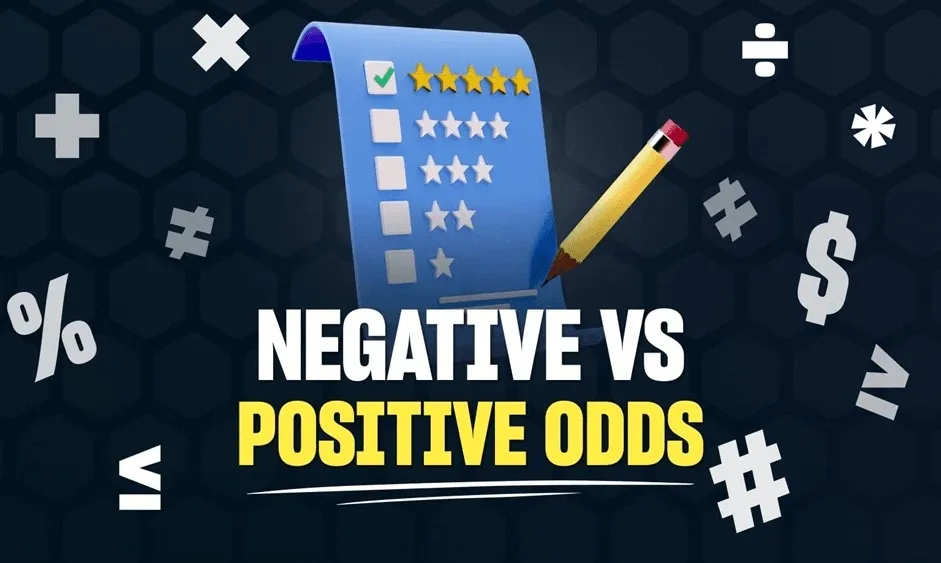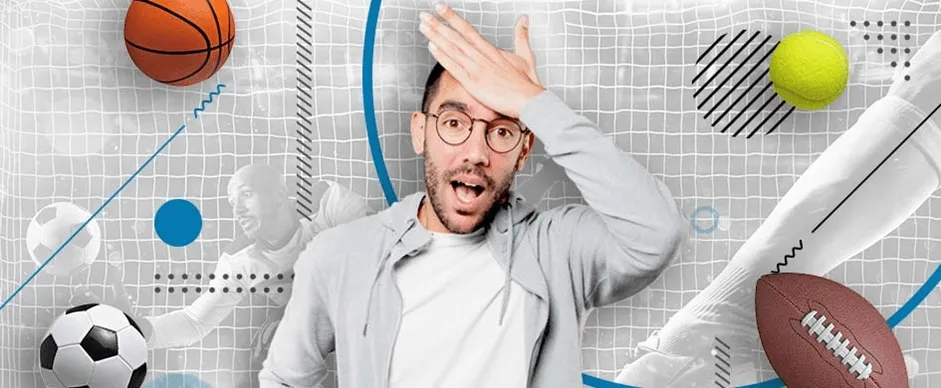Betting Odds Explained: Understanding How They Work

Understanding Sports Betting Odds
To the untrained eye, a bookmaker’s line may seem simple enough: there are numbers next to various teams and/or players, each representing something akin to betting odds. Over the course of the odds, these are careful evaluations from thousands of variables, statistical numbers, and data analysis for the present sporting team or athlete behavior, training, and past head-on meeting results between both sports teams or professional athletes.
The fundamental understanding of betting odds is simple. It lies in their ability to convert actual event probabilities into mathematical values. For example, a bookmaker offers odds of 1.50 on a win. It means that the probability of that outcome is estimated at 66.67%. But it’s essential to remember that these numbers already include the bookmaker’s margin. It’s a kind of commission that secures profit for the betting company.
Professional bettors view odds as indicators of bet value. They compare their own probability estimates with those offered by the bookmaker. They search for discrepancies and only betting when they find positive expected value.
A good skill for successful odds analysis is the ability to convert odds into probabilities. For instance, odds of 2.00 correspond to a 50% probability and 1.25 to 80%. This ability allows bettors to instantly evaluate the real worth of each bet. This way you can make well-considered decisions based on mathematical analysis - but not on emotions or intuition.
Special attention should be paid to the dynamics of odds movement. Their shifts often reflect not only real changes in event probabilities but also the bookmaker’s response to money flow.
Mastering odds is key to successful betting. For a wider range of strategies, check out Sports Betting Tips: Your Guide on How to Sports Bet to elevate your betting game.
Types of Betting Odds
The global sports betting industry uses loads of odds formats. They each have its unique features and advantages. The choice of a specific format is often influenced by geographic traditions and historical factors. The first step to learning how to interpret them is familiarity with odds.
Moneyline Odds: A Closer Look
The American odds format dominates the U.S. market. They are widely used in major sports leagues like the NFL, NBA, MLB, and NHL. It uses positive and negative numbers. A value of -150 shows the amount needed to bet to win $100. And, for example, +150 indicates the potential profit from a $100 wager.
In professional circles, this format is valued for its ability to quickly indicate favorites and underdogs. But what does minus mean in betting? When you see a negative number, it’s a sign of the favorite; a positive number signals the underdog.
To calculate potential winnings with moneyline odds, specific formulas are used. For negative odds, the bet amount is divided by the absolute value of the odds and then multiplied by 100. For example, with a $300 bet at -150 odds, the potential profit would be: (300 / 150) × 100 = $200.
Finding the answer to what does plus mean in betting is even simpler. For positive odds, the bet amount is multiplied by the odds and then divided by 100.
There is also a simplified way to convert plus minus betting odds to probabilities. For negative odds, use the formula: |odds| / (|odds| + 100) × 100%. For positive odds: 100 / (odds + 100) × 100%. This enables quick estimation of the real chances of a team or athlete as assessed by the bookmaker.
Professional bettors often leverage the moneyline format to identify valuable bets. For instance, +250 odds imply a probability of around 28.57%, and if a bettor’s calculations suggest higher real chances, this may be a positive expectation bet.
Fractional Odds Explained
A legacy of British bookmakers, fractional odds are still widely used in the UK and Ireland. The notation 5/1 (read as “five to one”) means that for a one-unit currency bet, the potential net win is five units.
The advantage of fractional odds lies in their transparency — the player always sees the exact ratio of potential profit to the bet amount. However, when dealing with non-standard values like 13/5, calculations may take extra time.
To convert fractional odds to probabilities, use the formula: denominator / (numerator + denominator) × 100%. To illustrate, odds of 4/1 equate to a probability of 1/(4+1) × 100%, which gives us 20%. This information is particularly useful when assessing the odds of long-shot underdogs in horse racing or boxing matches.
There are also specific notations in the fractional format. The “EVS” (Even money) notation is equivalent to 1/1 odds, meaning equal chances. The term “SP” (Starting Price) is specific to horse racing and means the bet will settle based on the odds at the start of the event. Experienced bettors use the nuances of fractional odds to quickly identify valuable bets. For instance, 11/10 odds suggest a minimal edge for the favorite and are often seen in closely matched contests.
Decimal Odds and Their Usage
The European or decimal format is gaining popularity due to its versatility and simplicity of calculation. Odds of 2.50 immediately show how many times your initial stake will multiply in case of success. Net winnings can be determined by multiplying the bet amount by the odds and then subtracting the amount initially wagered.
The key to answering the question of how to understand betting odds is understanding the advantages of decimal odds. The main benefit is mathematical transparency. Outcome probability is easily calculated by dividing one by the odds, which is especially useful when analyzing complex bets and calculating systems.
A value of 2.00 is particularly important in decimal odds. It equals a 50% probability and indicates coin-flip probabilities. Odds below 2.00 denote a favorite. And odds higher than 2.00 suggest an underdog.
Decimal odds are handy when dealing with intricate bet types. These are accumulators or parlays. These odds are combined to produce a total odds figure. In turn, it provides an immediate indication of the potential payout - accounting for all outcomes. For example, a three-event parlay with odds of 1.50, 1.80, and 2.00 results in combined odds of 5.40.
However, many modern bookmakers offer an option to convert odds from one format to another. Professionals recommend working directly with decimal odds, as it enables quicker detection of discrepancies across bookmakers’ lines and the identification of arbitrage opportunities.
Many modern analytical tools and betting software use decimal odds as the base, converting other formats into decimal for unified calculations and simplified comparison across bookmakers, which is crucial for professional betting.
How Odds Influence Betting Strategy

Building an effective betting strategy requires a deep understanding of how odds impact decision-making and the answer to the question, how to read betting odds.
The fundamental principle of strategic betting is the concept of "value betting" — finding bets with positive expected value. Experienced players conduct comparative analysis, matching their probability estimates against the bookmaker’s odds. For example, if a bookmaker offers odds of 2.50 (implying a 40% probability) on an event that a bettor calculates has a 45% chance, this bet is considered promising for long-term profit.
The bet size also directly depends on the offered odds. The Kelly formula, widely used by professionals, considers both the probability of winning and the odds to determine the optimal stake size. Most experienced players, however, use a fraction of the amount recommended by the Kelly formula to minimize risk.
The dynamics of odds changes offer additional opportunities for strategic planning. A sharp drop in odds may indicate the emergence of crucial information not accounted for in the initial line.
Odds analysis is particularly significant in live betting, where the speed of odds changes can hint at likely developments. For example, if odds on a favorite decline more slowly than expected after a goal is scored, it may suggest that the bookmaker views the situation as unstable, possibly expecting a response from the opponent.
Strategic bankroll management is also influenced by the offered odds. With high odds (over 3.00), professionals often reduce the stake size to compensate for increased result volatility. Conversely, when betting on clear favorites with low odds (under 1.30), many increase the stake size, considering the higher probability of winning.
A critically important element of strategy is understanding the fair price for each outcome. Professional bettors develop their own probability models and compare the results with the bookmaker’s line.
Interpreting Positive and Negative Odds

The positive and negative odds format provides bettors with a powerful tool for quickly assessing probabilities and potential returns.
Negative values in the line immediately indicate the favorite status and the required investment. When a bettor sees -250, it means they need to bet $250 to make a net profit of $100. Professional players use a simple method for quick calculation: dividing 100 by the absolute value of the odds shows the return on investment percentage. In this case, 100/250 = 0.4, which means a 40% return on the invested amount.
Positive odds, on the other hand, indicate underdogs and the potential for high profits. Odds of +350 suggest a chance to win $350 from a $100 bet. Experienced bettors pay close attention to such odds, as bookmakers often underestimate the chances of underdogs, creating additional margin on popular favorites.
The gradation of odds values also conveys important information about the power distribution. The difference between odds of -110 and -130 may seem minor, but for professionals, it represents a significant change in probability assessment. The first odds imply a probability of around 52.4%, while the second suggests a 56.5% likelihood of the favorite winning.
To answer the question of how to read sports odds, it’s important to focus on analyzing the movement between positive and negative values. A shift from positive to negative odds (e.g., from +120 to -110) signals a substantial change in the bookmaker's assessment of the odds.
The art of interpreting positive and negative odds also includes understanding the psychological aspect. Many novice players avoid high negative odds, deeming them “unprofitable,” while professionals assess each offer purely in terms of the risk-to-potential-reward ratio.
The Role of Juice in Betting
The profit mechanism for bookmakers is built on using the margin, known in professional circles as the "juice" or "vig." This mathematical tool gives the bookmaker an edge over players, regardless of the event outcome; however, understanding how it works opens up opportunities for more effective betting.
A classic example of margin in action is even-chance bets, where the theoretical odds should be 2.00 for each outcome. However, bookmakers typically offer odds of 1.91-1.91, embedding a margin of around 4.8%. For professional players, this means needing to win not 50% but at least 52.4% of bets to break even.
To understand how do odds work, it’s essential to remember that the margin can vary significantly across sports. Popular matches in top football leagues often come with a minimal margin of 2-3%, whereas lower-division events or niche sports can include a margin of 10% or more. Experienced bettors consider this factor when selecting betting markets, preferring events with minimal margins.
The margin’s impact is especially noticeable when betting on underdogs with high odds. Bookmakers often increase the margin on such outcomes, knowing that most players overlook precise calculations when dealing with high odds. For example, with a true probability of 20% (odds of 5.00), a bookmaker may offer odds of 4.50, increasing their edge.
Professional players have developed several strategies to minimize the impact of margins. One approach is to seek out bookmakers with reduced margins in specific markets.
Of particular interest is analyzing how the margin is distributed among outcomes. In some cases, bookmakers unevenly distribute the margin, embedding a greater part into specific outcomes. This creates situations where one of the odds is more “fair” relative to the true probability.
In live betting, the margin is usually increased by 2-3% compared to pre-match lines. This is due to the bookmaker's heightened risk associated with rapidly changing odds.
Odds are just one part of the betting equation. Learn how to bet using cryptocurrency for faster and more secure transactions in What is Crypto Betting?
Common Betting Mistakes to Avoid

Professional bettors pay special attention to analyzing their actions and developing safeguards against common misconceptions.
Common mistakes in working with odds:
- Ignoring the bookmaker’s margin. Many bettors forget to account for the bookmaker’s built-in advantage when assessing the profitability of bets. For instance, with odds of 1.91 on both outcomes, you need to win not 50% but at least 52.4% of bets to break even.
- Misinterpreting probabilities. Mistaking odds of 2.00 as indicating a 50% chance of an event, without accounting for the margin distribution across outcomes. In reality, these odds may represent a probability of 45-48%.
- Overvaluing high odds. The temptation to bet on high odds without proper analysis of the actual chances. Odds of 7.00 may look attractive, but if the true probability is less than 12%, the bet has a negative expectation.
- Neglecting odds comparison. Failing to compare odds across bookmakers’ results in lost potential profits. A difference of 0.10-0.15 points can significantly impact long-term results.
- Impulse betting on “sure things.” Excessive confidence in low-odds bets without considering the real risk-reward ratio. Losing a single 1.20 odds bet erases the gains of four previous wins.
- Lack of a mathematical approach. Making decisions based on intuition and emotions rather than calculating the real value of the bet. Professionals always evaluate the expected value (EV) before placing a bet.
- Poor bankroll management. Increasing bet sizes after losses or using fixed amounts without considering odds and confidence in the prediction.
- Chasing “steam.” Blindly following popular bets or trends without personal analysis. Mass betting often leads to distorted odds.
- Ignoring long-term statistics. Focusing on short-term results instead of analyzing a large number of bets. Professionals assess strategy effectiveness over hundreds of bets.
- Lack of record-keeping and analysis. Neglecting to keep detailed statistics of their bets, which makes it harder to identify weaknesses in the strategy and adjust their approach.
To have betting odds explained and to overcome these mistakes, it’s recommended to regularly analyze your game, keep detailed records of all bets, and strictly adhere to the chosen strategy. Special attention should be given to the mathematical basis of each decision and emotional control.
Conclusion: Making Informed Bets
A professional approach to sports betting is built on a fundamental understanding of how betting odds work and the ability to apply this knowledge in practice. A successful strategy always relies on a comprehensive analysis of offered odds and their alignment with the true probability of outcomes.
As you delve deeper into betting, it becomes clear that understanding how to read odds reveals they’re much more than just numbers determining potential winnings. Each figure represents meticulous analytical work by bookmakers, factoring in a wide array of elements — from statistical data to money flow dynamics. Understanding these mechanisms allows bettors to find valuable opportunities in the line and make more informed decisions.
It’s essential to recognize that working with different odds formats — American, decimal, or fractional — isn’t just a matter of preference. Each format has its advantages for analysis and may be more convenient in certain situations. Professional bettors navigate all formats comfortably, expanding their ability to find advantageous bets in the global market.
Special attention should be paid to the role of margin in forming odds. Only with all odds explained can you improve your chances of profitability. Knowing how the bookmaker’s commission affects real probabilities enables a more accurate assessment of each bet’s profitability, helping you choose the best options. It’s crucial to remember that successful betting is a marathon, not a sprint, where patience and discipline play a key role.
A strategic approach to betting requires understanding betting odds and continuous development to adapt to changing market conditions. Regular analysis of your decisions, keeping detailed statistics, and willingness to learn from mistakes are essential elements of professional betting. Only such a comprehensive approach can lead to stable results in the long term.
To apply your odds knowledge on trusted platforms, explore Best Crypto Betting Sites for top recommendations in crypto betting.
FAQ
To convert decimal odds to fractional odds, subtract 1 from the decimal odds. The result represents the profit relative to the stake. Express this result as a fraction for fractional odds. Example: If the decimal odds are 2.5, subtract 1, which gives 1.5. Convert 1.5 into a fraction, such as 3/2. So, the fractional odds are 3/2.
To convert decimal odds to American odds, use the following rules: • If the decimal odds are greater than 2.00, subtract 1 from the decimal odds, multiply the result by 100, and the outcome will be positive American odds. • If the decimal odds are less than 2.00, subtract 1 from the decimal odds, then divide -100 by this result to get negative American odds. Example 1 (Decimal odds > 2.00): For decimal odds of 2.5, subtract 1, which gives 1.5. Multiply 1.5 by 100 to get +150. Example 2 (Decimal odds < 2.00): For decimal odds of 1.8, subtract 1, which gives 0.8. Divide -100 by 0.8 to get -125.
To convert fractional odds to decimal odds, add 1 to the fractional odds. The result is the decimal representation of the total payout, including the stake. Example: If the fractional odds are 3/2, convert them into a decimal (1.5) and then add 1. The decimal odds are 2.5.

Sergey Ilyin
An experienced specialist in the field of betting and gambling. He analyzes market trends, player behavior, and the dynamics of online gaming platform development. An expert in the intricacies of sports betting and knowledgeable about the regulatory framework of the gambling industry.
